|
All in the Family: The Real Syndicate
The same interbreeding dynasty controls every major bank, mining, and transportation company in London, including the HongShang, Jardine Matheson, Barclays Bank, Anglo-American Corporation, N.M. Rothschild, and Lazard Freres. As we will show, their cousins and in-laws also control Britain's political and intelligence establishments, and have done so throughout the entire time-frame of this report. After a more careful look, however, the "Mafia" image turns out to be something like a pornographic negative: the Italian, Jewish, Ch'ao Chou Chinese, and other ethnic minorities that figure in aspects of the narcotics traffic are fitting allies of the British oligarchy because their tight-knit family networks parallel it. But the British dynasty is deeper, more sinister than that. The dynasty enjoys such power in Britain that a favored nephew can clear opium shipments through Hong Kong, while an uncle clears payments through a big London bank, a second cousin expedites necessary gold shipments through the Hong Kong market, and an in-law in British intelligence reassures the American drug enforcement authorities. To call this a "conspiracy" would abuse the meaning of the term. Under examination is a dynasty that has controlled Britain for hundreds of years, enjoys virtually all major positions of corporate and political power, and believes that making events happen from behind the scenes is as natural and ordinary as afternoon tea. When the chairmen of the boards of Britain's leading banks, trading houses, and mining companies show up at the same weddings and christenings (and bar mitzvahs) as the chiefs of British intelligence and various government ministries, there is no need for the formal trappings of conspiracy.
Conspiratorial rituals are useful to bind together secret societies composed of otherwise unorganized individuals. But it doesn't work that way at the top. In a frank discussion, a Lazard Freres partner who is quite active in the Royal Institute of International Affairs exclaimed.
The British gentleman is entirely within his rights. Like the HongShang Bank itself, the British oligarchy is so much part of the bedrock of events that it does not need to act in conspiratorial fashion: by its own self-description, it merely is, and always has been. Its adherents have indulged in public self-examination only under the protective coloring of fiction, e.g. a famous novel by a member of one of the British secret societies, Bram Stoker's Dracula.
Of that secret society, the "Order of the Golden Dawn," more will be said below.
The beginning: the Knights of St. John of Jerusalem The elite of the elite in Britain's secret dynastic life is Her Majesty's Most Venerable Order of St. John of Jerusalem — the "Christians who are not really Christians." (4) We have already highlighted the Knights' prominence in the centers of the world drug traffic: from the Hong Kong and Shanghai Bank to the Canadian Pacific in Vancouver to Barclays Bank in London.
Although Queen Victoria reconstituted the Most Venerable Order in the 1880s as the Protestant British branch of the Knights of Malta, our tale properly begins much earlier with the original order of the Knights of St. John, founded in Jerusalem in 1070. The order of St. John inherited what British authors smirkingly call "the wisdom of the East" from the Coptic. Gnostic, and Manichean networks of the Eastern Mediterranean. The Order of St. John thus maintained direct continuity with the ancient Cult of Isis. However distant from the familiarity of the American reader, the area we have entered must be viewed the way the families themselves see it. The brooding evil of Walter Scott or Robert Louis Stevenson romances, or their cheap Gothic novel imitations, gives the reader a basis for insight into the inner history of the families, and the need to begin with cobwebbed history in order to get to the bottom of Dope, Incorporated. To begin at the beginning: in the 14th century, the Order of St. John's emergence in England was part of a project to annihilate its humanist opposition, the Knights Templar. Total warfare had broken out on the continent. The oligarchists in France and Italy, Philip the Fair and Pope Clement V, slaughtered hundreds of Templars, and burned the Templars' courageous Grand Master, Jacques de Molay, at the stake in 1314. A renegade group of Templars under the command of an adventurous thug, King Robert Bruce, grabbed Scotland — Europe's least civilized outpost — as an "offshore" stronghold, as a form of insurance against their uncertain fortunes on the European continent.
King Robert Bruce is not only the spiritual founder of the Scottish Rite of Freemasonry but the direct ancestor, by unbroken lineage, of all the men of evil in England who figure in this report.
This statement by a leading historian of the Masonic movement is the standard interpretation of the origin of the Scottish rite.
Elgin returned to England in 1859.
The account concludes that Elgin's "letters show he was a man of warm affections, eminently domestic, with very decided convictions on religion. . . ." Who was running England at the time?
The prime minister was the same Lord Palmerston who turned the Scottish Rite into Britain's leading cash-producing export product. The foreign secretary was Lord John Russell, son of the 6th Duke of Bedford, and grandfather of Britain's most dangerous 20th century intelligence operative — Bertrand Russell. Palmerston and Russell were relatives of the Bruce brothers, the Elgin peerage, by marriage into the direct line of Order of St. John control over England. The branch that encompasses Britain's two leading cabinet ministers during the Second Opium War is the Villiers line. The line began with George Villiers, who assisted Robert Cecil and Edward Bruce in seizing the English throne for another descendant of Robert Bruce — James I of Scotland — in 1603. (8) Lord Russell's daughter, Victoria, married into the Villiers family. Russell's grandson, Bertrand, among his other covert operations, maintained liaison with Chou En-lai throughout the postwar period on behalf of British intelligence, at the height of the Anglo-Chinese drug traffic. (9) Even more significant is the third member of the London team during the Opium Wars — Colonial Secretary Edward BulwerLytton, a relation by marriage of the Duke of Wellington. His son married Edith Villiers, of the same branch of the leading Order of St. John dynasty.
Bulwer-Lytton's Nazi German and British secret societies met officially for the last time when Nazi minister Rudolf Hess attempted to make contact in 1941 by flying to Britain. Bulwer-Lytton directly influenced John Ruskin at Oxford University and established the lineage that leads — through such names as Milner and Rhodes — to the present-day Royal Institute of International Affairs.
Ruskin's students included Milner, Rhodes, Albert Grey, and the future director of research for the IA, Arnold Toynbee. Ruskin's inaugural speech at Oxford in 1870, inspired by Bulwer-Lytton, left such an impression on Cecil Rhodes that he carried a handwritten version of it with him until he died.
The speech — which set the tone for Rhodes's 1877 will quoted in Section 7 — stated in part:
Bulwer-Lytton's son Edward Lytton was Viceroy and Governor-General in India 1876-80. Two aspects of the younger Lytton's rule in India are important to this report. First, Lytton supervised the single greatest expansion period in the history of opium production in British India. (15) As noted in Part I, Palmerston had set forth this task as a means of compensating for Britain's industrial decline relative to the United States. It was fitting that the son of his former cabinet colleague and fellow cultist personally carried out Palmerston's opium-expansion program. Secondly, Edward Lytton's rule in India provided a home for the most important of the crackpot cultists inspired by his father. Lytton himself was the closest friend of Rudyard Kipling's parents, members of the circle around A. P. Sinnett's Allahabad journal The Pioneer. (16) The elder Bulwer-Lytton's follower Madame Blavatsky, of the Theosophy Cult, appeared in India in 1879, and recruited A. P. Sinnett to her belief-structure. (17) Both Kipling and Blavatsky employed the swastika as their personal mystic symbol. From Kipling, Blavatsky, Haushofer, and others, the swastika found its way into the German cults that formed the core of later Nazism. Kipling's last major official post was under press czar Lord Beaverbrook at the wartime Propaganda Ministry; working side-by-side with him was a relative of the Lyttons' by marriage, Sir Charles Hambro. Hambro went on to run Britain's dirty operations during World War II as chief of the Special Operations Executive from 1942 onwards. Kipling also served as a trustee of the Rhodes Trust from 1917-25. Kipling's cousin, Stanley Baldwin, was prime minister from 1923-29 and 1935-37; during his second tenure, the Baldwin government groomed Hitler as a "marcher lord" against the Soviet Union, setting the stage for Munich 1938. (18) Another well-known British literary figure, also with a mystical bent, deserves mention in this context: Alfred, Lord Tennyson. Tennyson married the niece of the 8th Lord of Elgin (James Bruce), and remained a close personal friend of the commander-in-chief of the Second Opium War. Tennyson was a founding member of the Metaphysical Society, with Bulwer Lytton's protégé John Ruskin, Lord John Russell's uncle Lord Arthur Russell, future prime minister Arthur Balfour, and Thomas Huxley. (19)
In 1880, the Metaphysical Society was reorganized, and became the Aristotelian Society. Lord John Russell's grandson Bertrand Russell became the Aristotelian Society's President 1913-14 and 1935-37; one of his successors was Sir Karl Popper. The Aristotelian Society remains the Apollonian side of British intelligence's High Priesthood.
The third member of the Milner team, William Boyce Thompson, was the head of the Red Cross delegation in Russia; the Red Cross is, officially, the "charitable" side of the Order of St. John of Jerusalem. (22) After the war, Thompson, with funding from the Morgan bank, established the Anglo-American mining firm in South Africa — which now controls 60 percent of world gold output outside the Soviet Union, and, through its controlling interest in De Beers, virtually all the diamond output (see Section 4). That is the origin of London's top-down control over the precious metals and gems channels for laundering dirty money. To tie these strands back into the main line of the narcotics traffic: Milner's hand-picked successor at Rio Tinto Zinc, whose original mines were in Spain, was Sir Auckland Geddes. Geddes, who ruled until 1952, was a sponsor of Francisco Franco's fascist coup in Spain. (23)
His nephew, Ford Irvine Geddes, was a director and then chairman from 1971-72 of the Inchcape family's huge shipping complex, the P&O Steamship Company, which has shipped more opium than any other entity in the world. One of P&O's officers, deputy chairman Sir Eric Drake, is a close associate of Sir William Johnston Keswick, also of the old Rio Tinto Zinc family (see Section 8). Drake and W. J. Keswick jointly control Canada's Hudson's Bay Company, which established the rum-running routes from Canada into the United States during Prohibition, together with the Bronfmans.
The old Inchcape family, whose current scion, the 3rd Earl of Inchcape, still is chairman of the P&O Lines, is closely related to the Matheson family of Jardine Matheson. The founder of Jardine Matheson, James Sutherland Matheson, was the son of Katherine Mackay and Donald Matheson; Mackay is the family name of the Earls of Inchcape. The 3rd Earl, J. W. Mackay, is the son of the 2nd Earl of Inchcape, who authored the infamous 1923 Inchcape Report, insisting that the opium trade must be maintained to "protect the revenues" of the British Empire — despite the outcry of the League of Nations. Through the current Lord Inchcape, the old opium dynasty married into the highest level of British banking. The afore-mentioned J. W. Mackay of the P&O Lines married Aline Pease, his brother-in-law, Richard T. Pease, has been the vice-chairman of Barclays Bank since 1970. Barclays Bank, as noted above, is the controlling institution for the entire array of Israeli financial operations, through its control over the current Japhet family bank — Charterhouse Japhet. The current senior Japhet family member, Ernst Israel Japhet, is now. the chairman of Israel's biggest commercial bank, Bank Leumi. Barclays Bank controls outright Israel's second-largest commercial bank, the Israel Discount Bank, also known as Barclays discount bank. Taking together the Inchcapes, Keswicks, Peases and related families, control over London's banking establishment becomes a swirl of intermarriages, to the point that the top London banks and the scions of the drug trade appear as a single family entity, rather than competing or even parallel institutions. For example, the current deputy chairman of Inchcape and Co. — the family, holding company that owns majority stock in the P&O Lines — is Sir Hugh Mackay-Tallack. Mackay-Tallack is also the deputy chairman of the Standard and Chartered Bank, the second-largest bank in the Far East after the HongShang. The 3rd Lord Inchcape himself, J. W. Mackay, is also a director of Standard and Chartered, along with cousin Sir Hugh. As the reader can judge from the chart, the Pease branch of the Family is further closely related to:
It should be remembered that the Lytton family and the Keswick family are related to each other, via marriage through the Fraser family, whose current leading member is deputy chairman of Lazard. The British and American Hofjuden are represented at the borders of this complex. As noted, the 10th Earl of Airlie married the granddaughter of Otto Kahn, Capo of American Hofjuden; his sister, Margaret Ogilvie, married into a branch of the dynasty (see chart) that, in turn, married into the Rothschilds. The Rothschilds were the first of a number of leading families to come up the ladder through intermarriage with the leading families — an award for special service to the British monarchy. Other prominent examples are the Kennedys and Bronfmans. After a display of Anglophilia during his tenure as America's Ambassador to the Court of St. James, Joseph Kennedy achieved his ultimate social-climbing ideal: his daughter Kathleen married the son of the 10th Duke of Devonshire. After their elevation to the status of leading Hofjuden during the 1930s, the Bronfmans intermarried with the French de Gunzberg family and the Belgian Lambert family (the Bel |
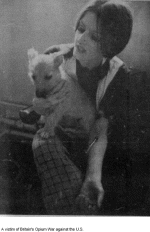
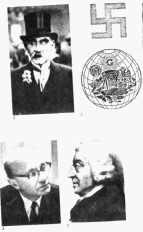
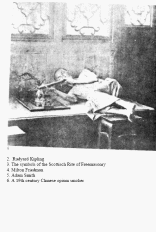

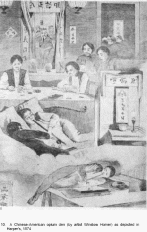
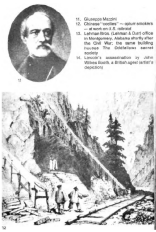
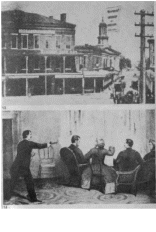
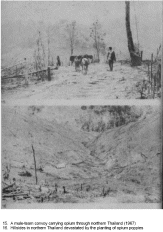
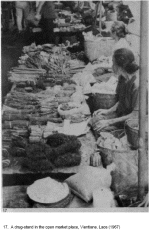
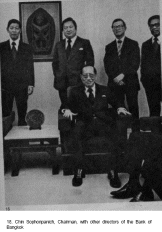
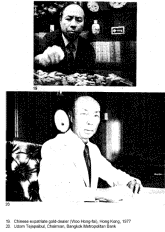
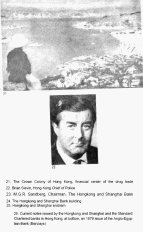
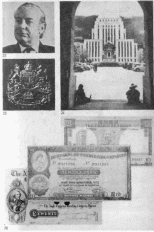
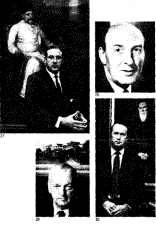

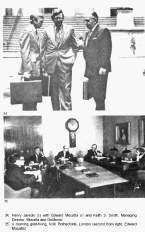
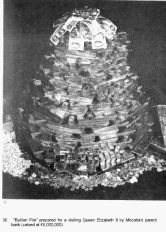
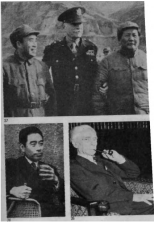
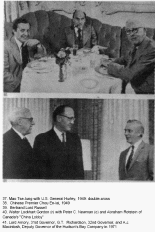
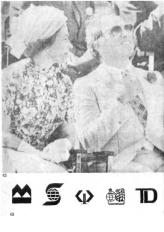
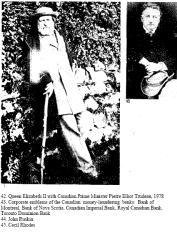
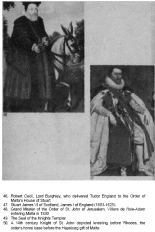
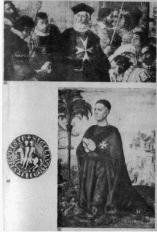
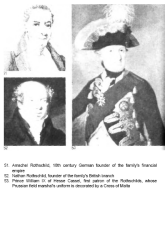
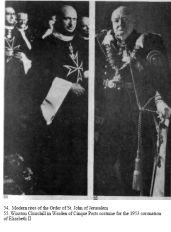
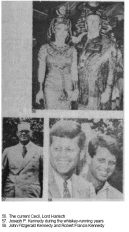
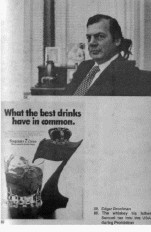
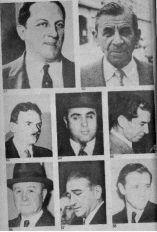
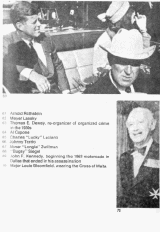
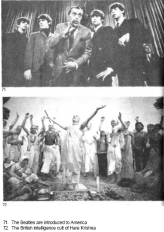
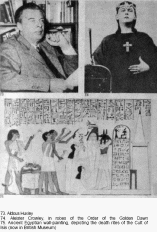
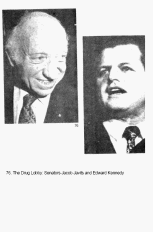
Comments
Post a Comment